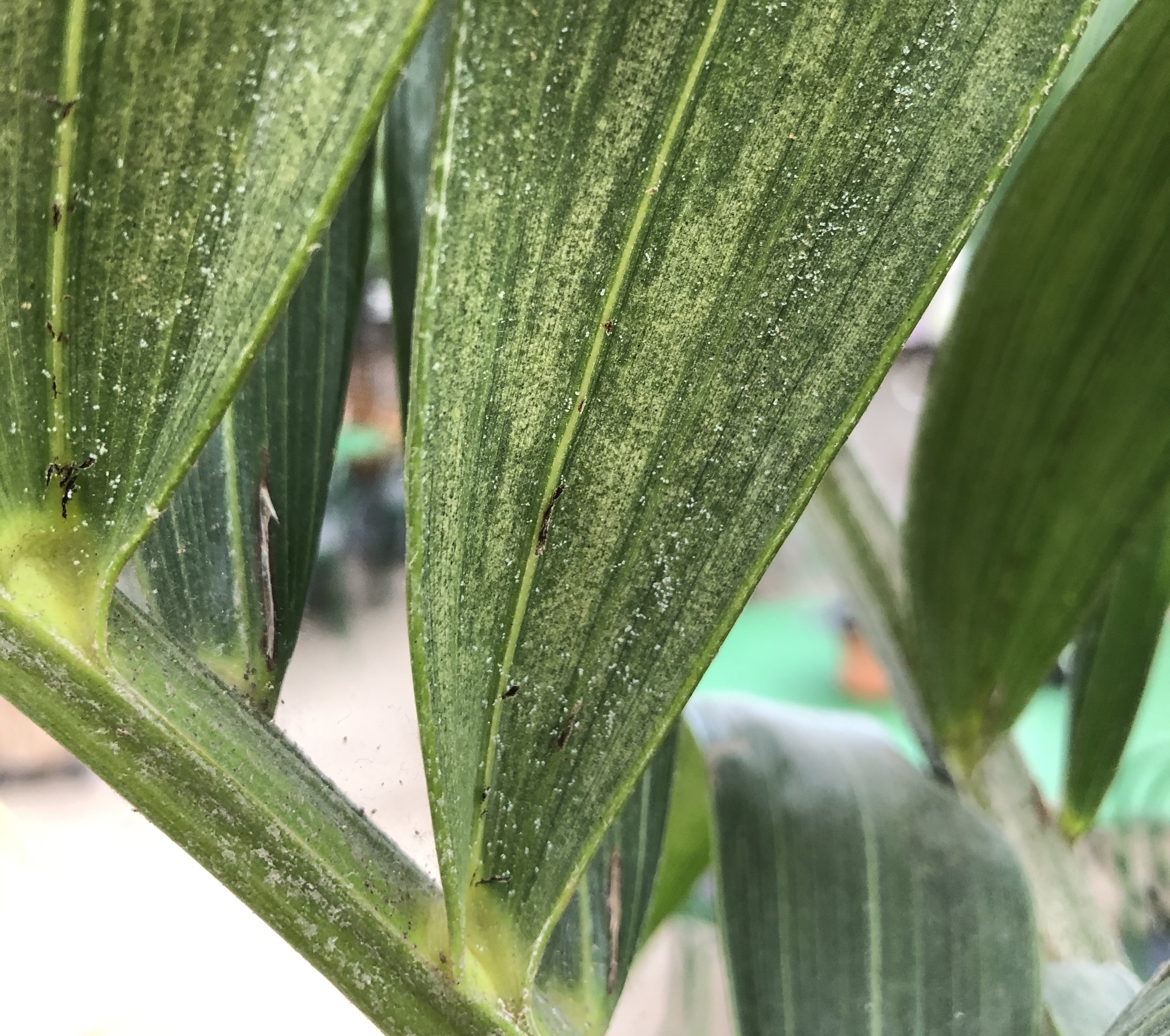What are spider mites?
A spider mite infestation can rapidly get out of hand, causing significant damage to your plants. It can even end up killing your plant, so it’s important to take action as soon as possible! They use their mouth parts and suck out the sap from each one the cells they're feeding from. Leaving tiny necrotic spots.
Symptoms
Dust-like particles on the leaves
Tiny specks moving around on the plant
Mottled/stippled-bleached discoloration of the leaves
Stunted growth
Curled edges of the leaves
Yellowing leaves
Fine strands of webbing. Mostly found at the edges of the leaves, on the undersides, in crevices of the plant and on new growth. In severe cases the webbing can cover the entire plant

What to do now
Isolate the infected plant
Prune off severely damaged parts of the plant.
Shower the plant with cold water. They dislike cold temperatures so try using cold water
Use a suitable pest control method. Insecticidal soap, neem oil or chemical pesticides are effective against spider mites and will help prevent future infestations
Repeat the treatment about once a week for the upcoming 4-6 weeks. Then repeat it about once a month for a couple of months. After that you can repeat the treatment only if necessary.
Continue to remove any visible mites on your plant between the treatments to speed up the process. You can use a masking tape or a lint roller
Increase the humidity around the plant
Consider using biological control. They can be controlled biologically by introducing natural predators such as different types of predatory mites, Phytoseiulus persimilis for example. Biological control is very effective when used in combination with the other treatments

Common questions
Which plants are more likely to be infested?
Spider mites can spread and infest most plants in your collection. Some plants are however more prone to get infested than others. Calatheas, Alocasias, Hydrangeas, Ficuses and Palm trees are example of plants that's often reported with being infested with mites. Plants being overwintered, such as Citruses, are also often infested and needs to be regularly examined.
What do they look like?
Spider mites are tiny oval-shaped arachnids that vary in both color and size. But they are barely visible to the naked eye. Colors can be light green, yellow, white, red, brown, black and even patterned. One of the most common species is the two spotted spider mite , Tetranychus urticae. As the name makes pretty clear, it has 2 spots, sometimes 4, on its otherwise light colored body. But it can also turn orange to orange-red. Especially females during their dormancy period.
Can they fly?
No, luckily not! They do not have wings. However, they are ‘wind surfers’, meaning that they can be carried by the breeze on their webs. Therefore, it’s important to carefully dispose of any infected material and remove all webbing to avoid the spread of mites to other plants. Put any infected plant parts in the trash - don’t try to compost them.
How long do they live?
When conditions are ideal for spider mites (i.e. warm and dry), eggs are laid almost continuously. It’s necessary to apply multiple treatments to be sure you get them all. Otherwise, you risk only removing the adults and not eliminating future generations. There are many different types of spider mites , so the length of their life cycle can vary greatly: anything from just 5 days to a month. However, the treatment for each type is the same, so it’s not necessary to try to identify the exact type of spider mite on your plant.
Do all mites produce webs?
All spider mites produce webs on their host plant. But there are other groups of mites that don't produce any webs. They aren't as common as spider mites on house plants, but all types of mites respond well to the same treatment.
How do I know if the plant is infested?
If you notice a lot of debris on your plant or you see discoloration but are unsure if there are any spider mites that's causing it, you can either use a magnifying glass to be able to look closer or you can take a sheet of plain paper and try to dust/scrape of the debris from the leaves onto the paper. It will be easier to see if the debris are moving around on the paper. The webbing is often confused with spider webs, dust or mold. The webs spun by spider mites are small, cling close to the plant, are dense and only found on the plant.
Can damaged parts recover?
Damaged parts of the plant won't recover. If it's possible you should consider pruning off severely damaged parts of the plant. This will also result in having less of the plant to treat or places spider mites might hide.
How can I prevent this in the future?
Examine your plants regularly for early signs of an ongoing spider mite infestation. This is especially important during hot and/or dry conditions. Stressed plants are extra vulnerable to Spider mites. Avoid sensitive plants to be exposed to excessive drought. If you bring plants back in during colder periods it can be wise to clean them up and keep them quarantined.
